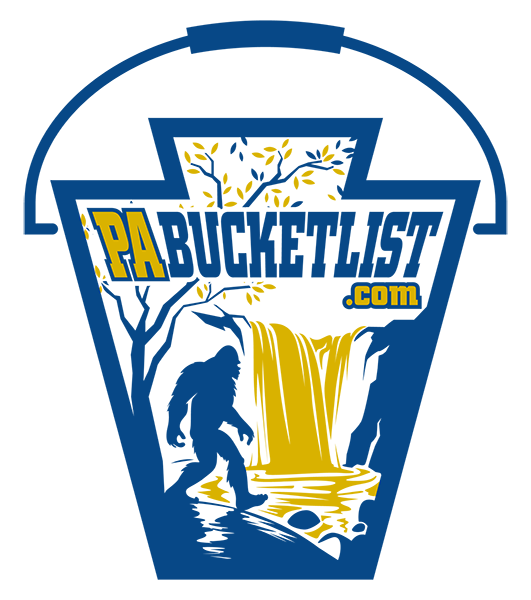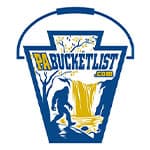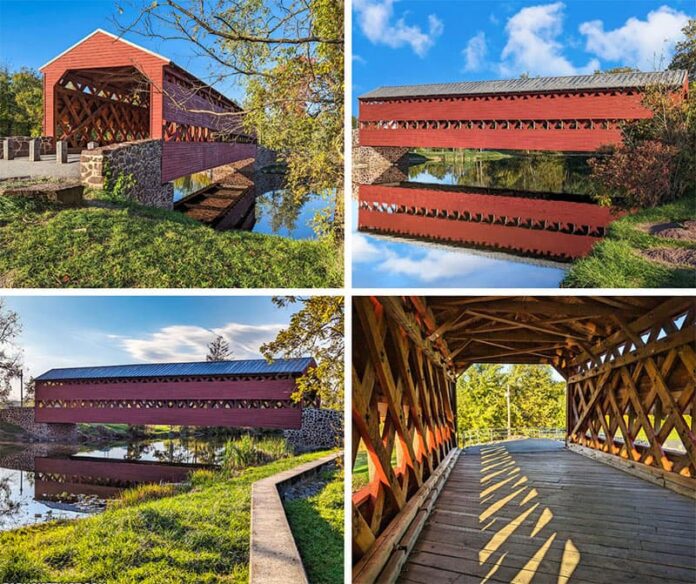
If you’re looking for information about Sachs Covered Bridge near Gettsyburg, you’re in the right place!
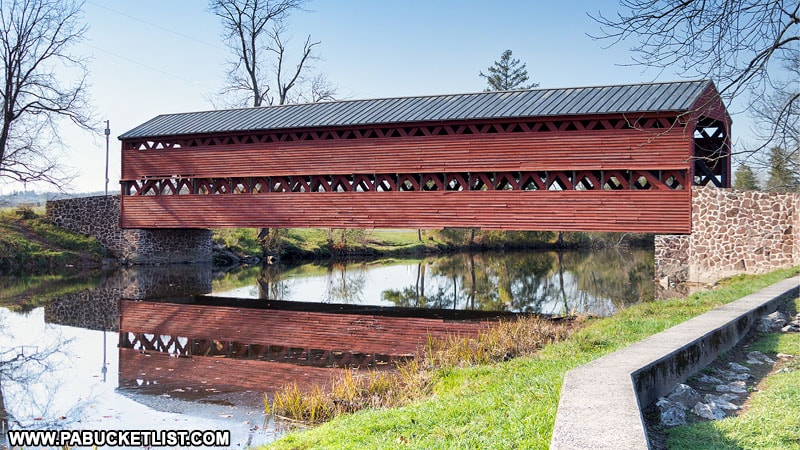
Sachs Covered Bridge was built around 1854 and spans Marsh Creek just south of Gettysburg.
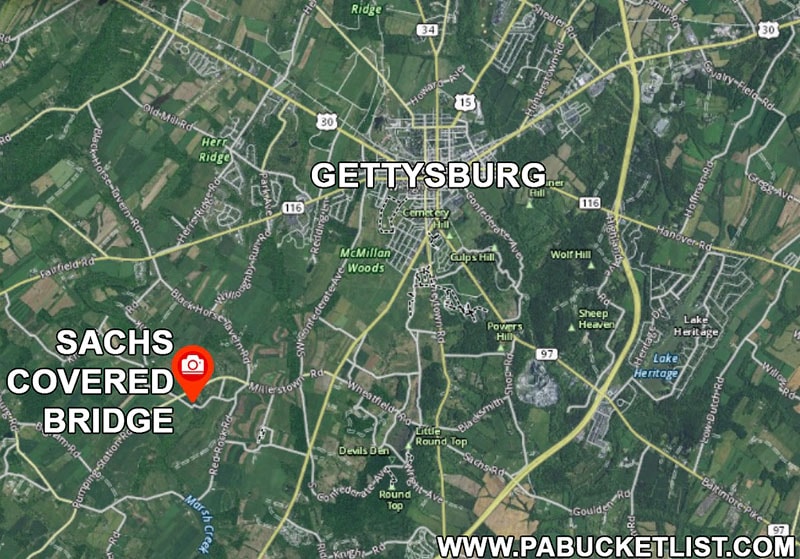
The bridge is also known also known as Sauck’s Covered Bridge, Sauches Covered Bridge, or Waterworks Covered Bridge.
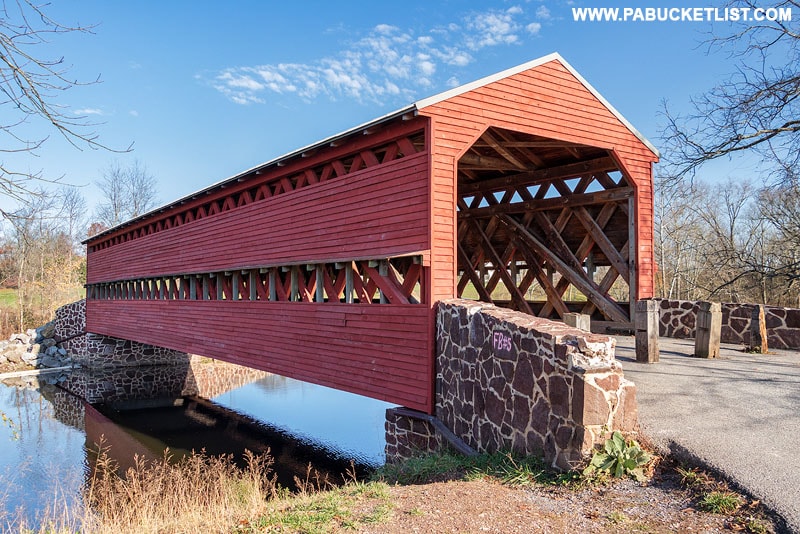
The bridge is closed to vehicular traffic (but open to pedestrians), and there is parking at either end of the bridge.
A wheelchair-accessible ramp is located next to the parking area on the northern end of the bridge, at GPS coordinates 39.79756, -77.27577, where Waterworks Road dead-ends at the bridge.
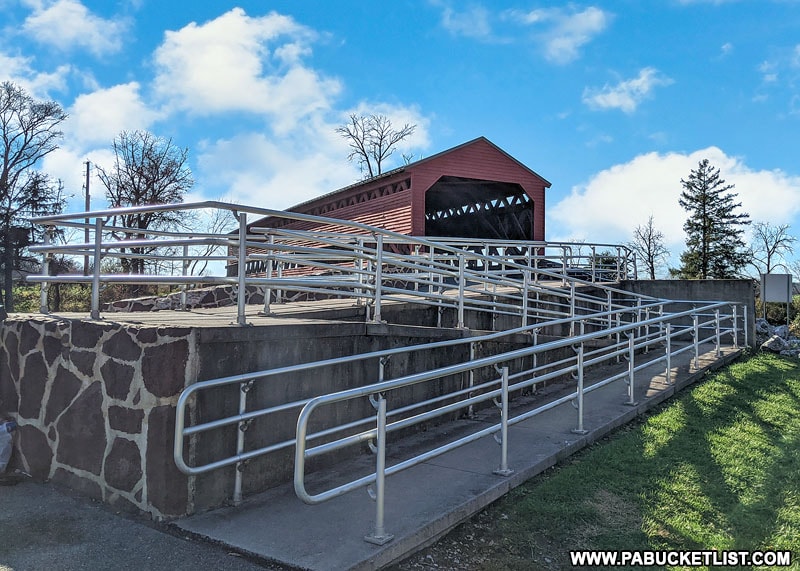
Sachs Covered Bridge During the Battle of Gettysburg
Nine years after its construction, Union forces crossed Sachs Covered Bridge on July 1, 1863, headed towards Gettysburg.
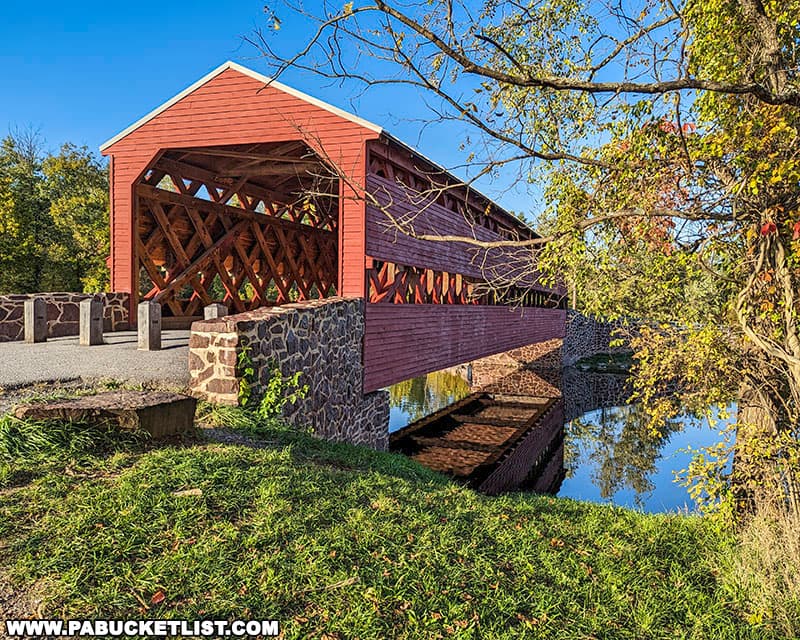
Three days later, retreating Confederate forces also crossed Sachs Covered Bridge, which in no small part is why the PA Department of Highways (PennDOT’s predecessor) designated it “Pennsylvania’s most historic covered bridge” in 1938.
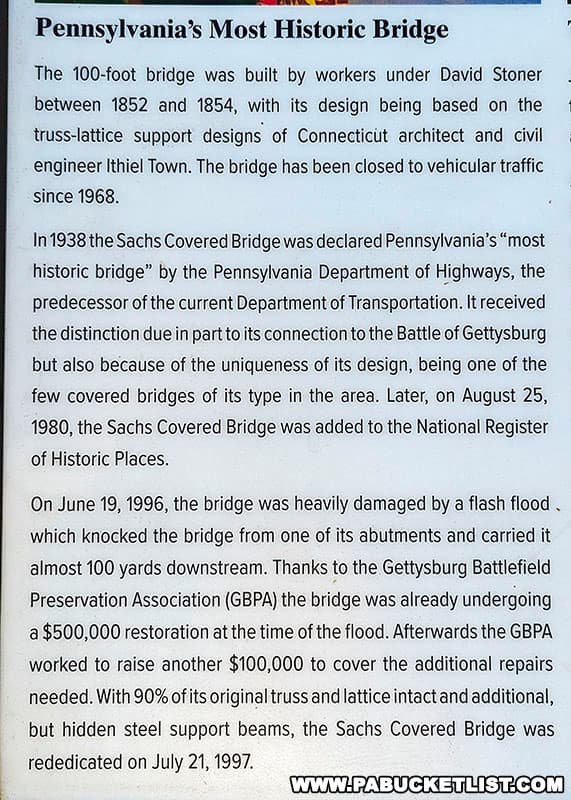
Sachs Covered Bridge Construction
Sachs Covered Bridge is 100 feet long and 15 feet wide.
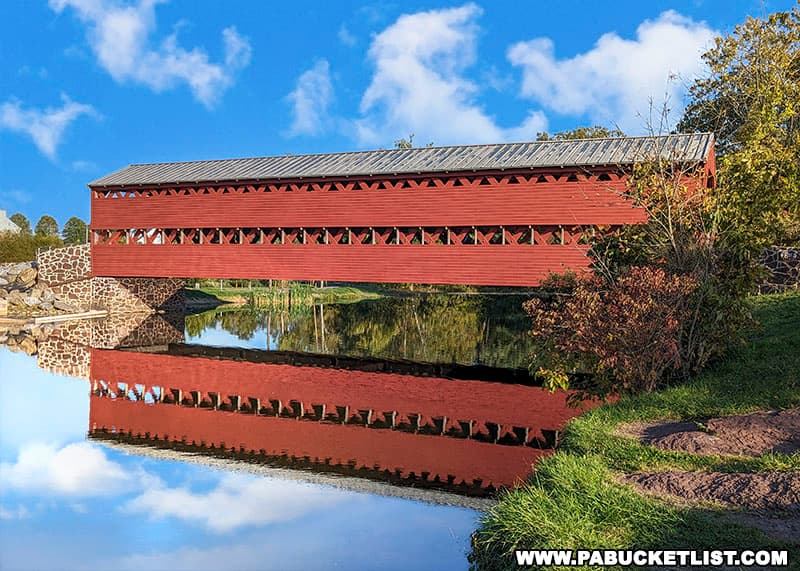
The cost to construct Sachs Covered Bridge in 1854 is reported to have been $1,544.00.
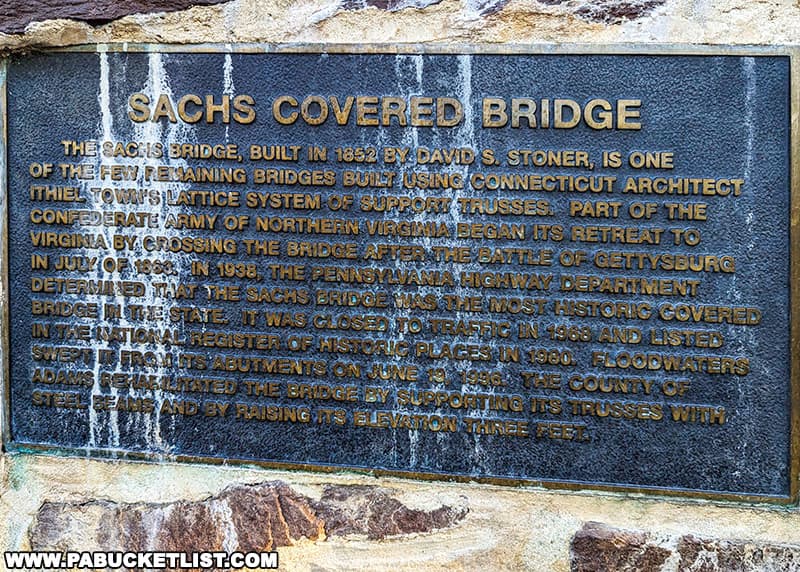
It utilizes an interesting construction technique known as a Town Lattice truss, named after its designer Ithiel Town.
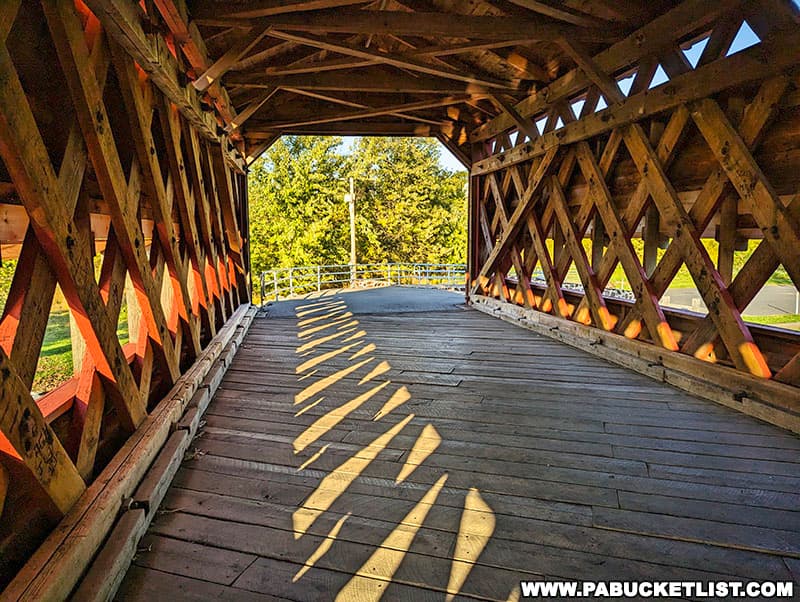
In a Town Lattice truss bridge, wooden beams are criss crossed to form a lattice which gives the bridge its structural integrity.
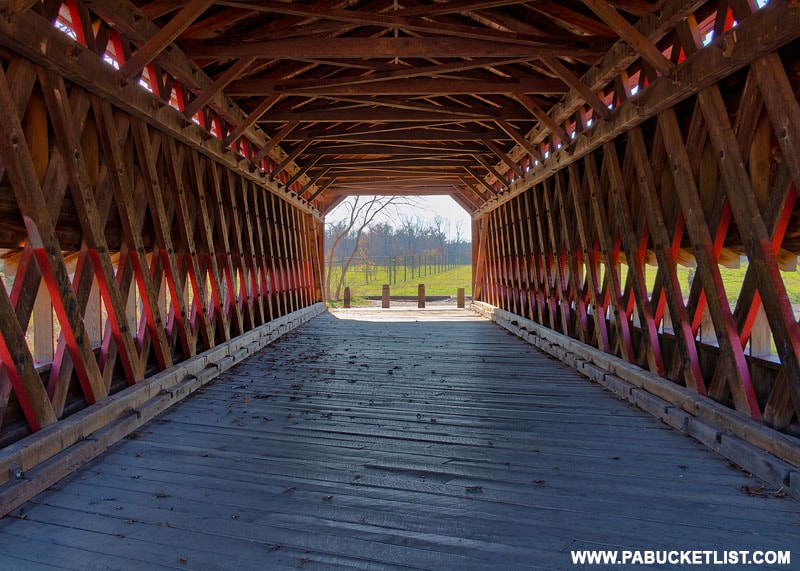
Sachs Covered Bridge Today
Sachs Covered Bridge was closed to vehicular traffic in 1968, and placed on the National Register of Historic Places in 1980.
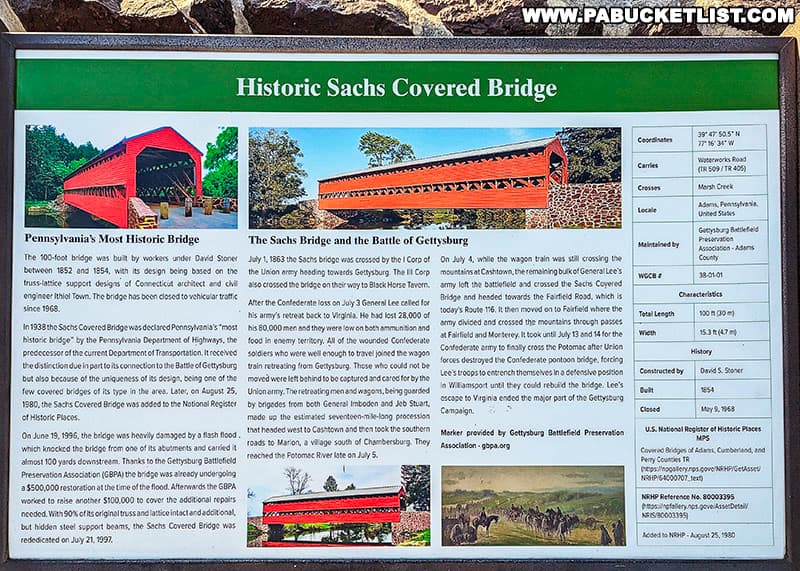
The bridge was damaged by flood waters in June 1996, repaired, and rededicated in July 1997.
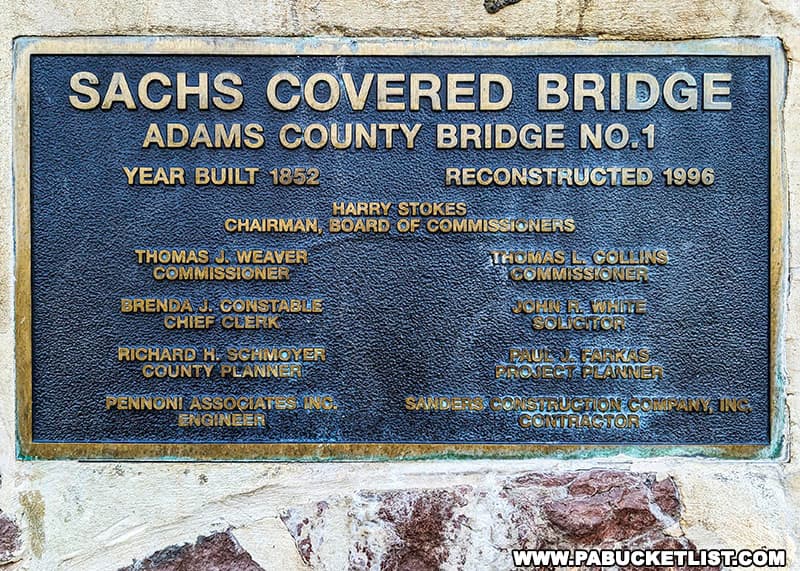
Because it lies so close to the battlefields of Gettysburg, it is rumored to be haunted and is a popular spot for modern-day “ghost hunters”.
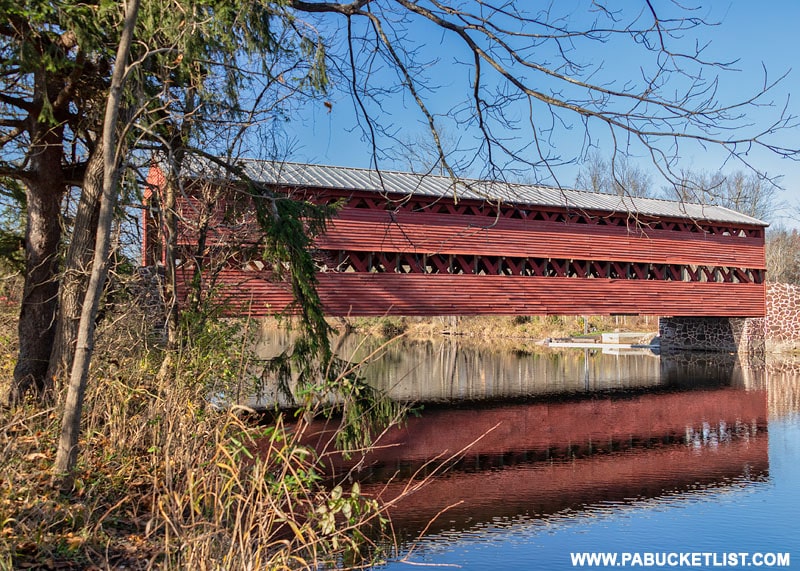
The openings in the sides of the bridge give you clear views up and down Marsh Creek.
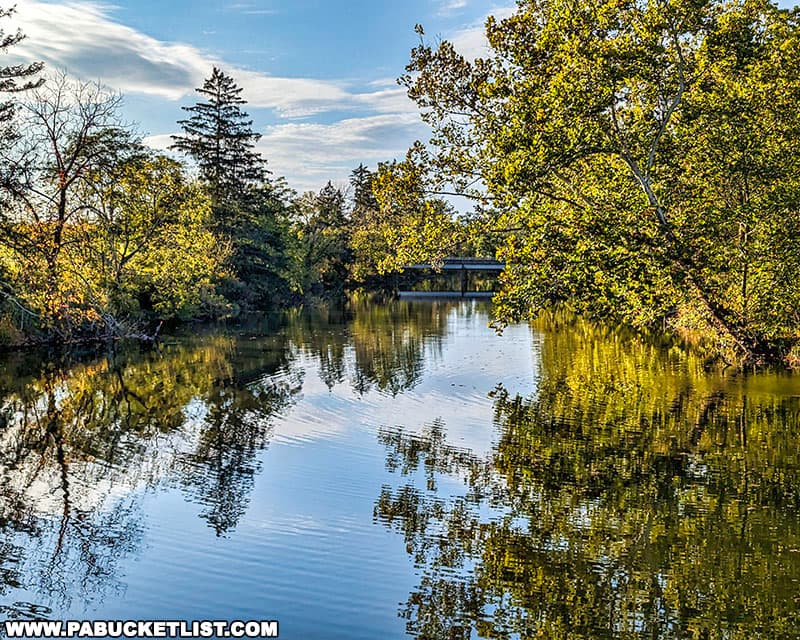
Visiting Sachs Covered Bridge near Gettysburg offers a serene stroll through history, enveloped in picturesque scenery and whispers of its Civil War past.
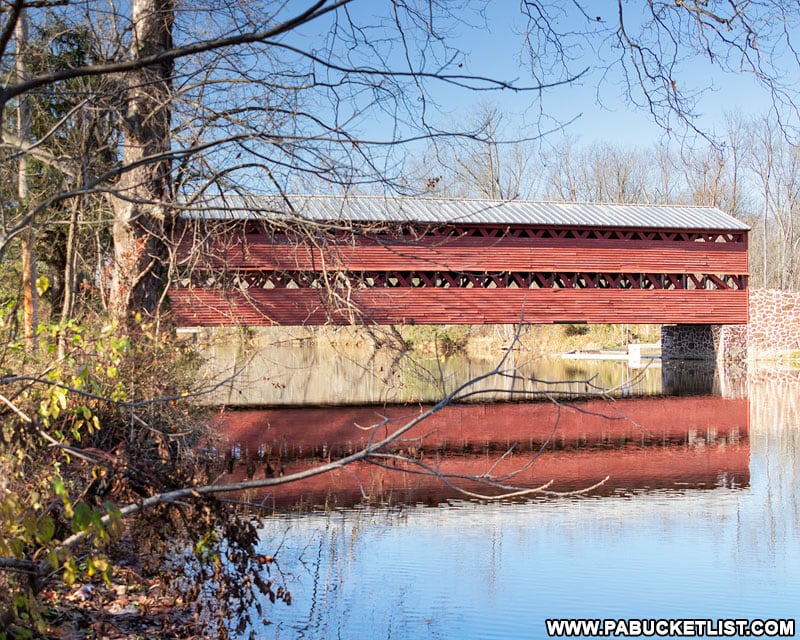
Nearby Attractions
Gettysburg National Military Park encompasses nearly 6,000 acres, including large portions of the original battlefield
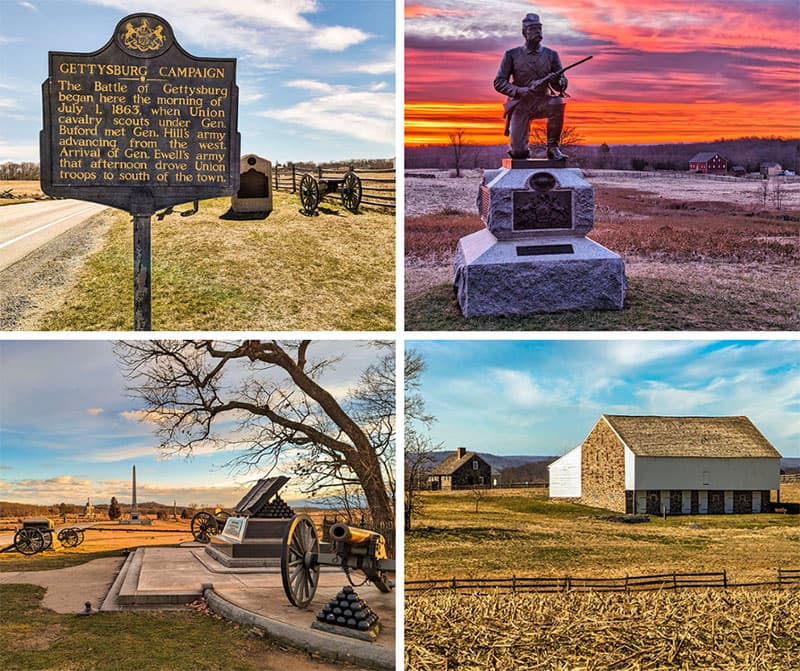
The Soldiers’ National Cemetery in Gettysburg is the final resting place for more than 3,500 Union soldiers killed in the Battle of Gettysburg, as well as American veterans of subsequent wars.
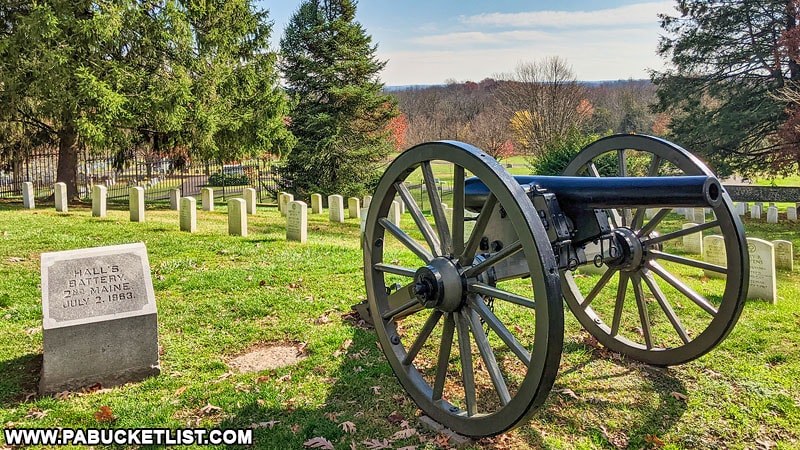
At its dedication in November of 1863, President Abraham Lincoln gave a 2-minute speech which is now considered one of the most iconic in American history, the Gettysburg Address.
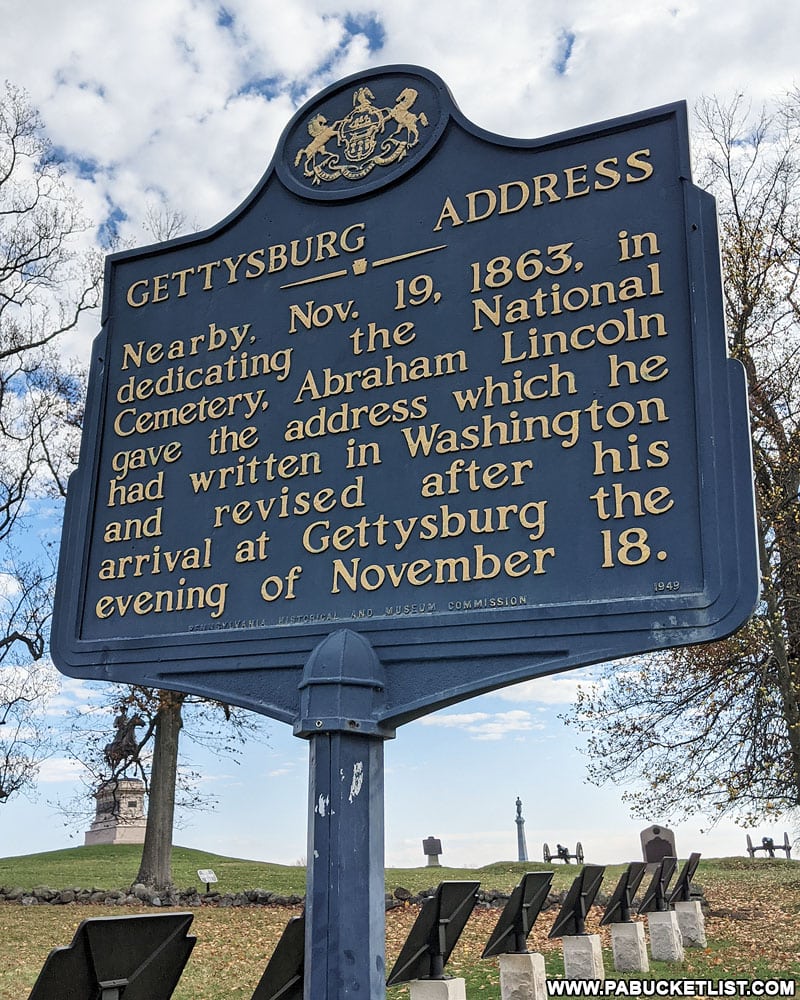
Exploring the Gettysburg Beyond the Battle Museum introduces you to an engaging collection of exhibits, artifacts, short films, and immersive experiences that illustrate what the townspeople of Gettysburg dealt with during the battle and in the days, months and years afterwards.
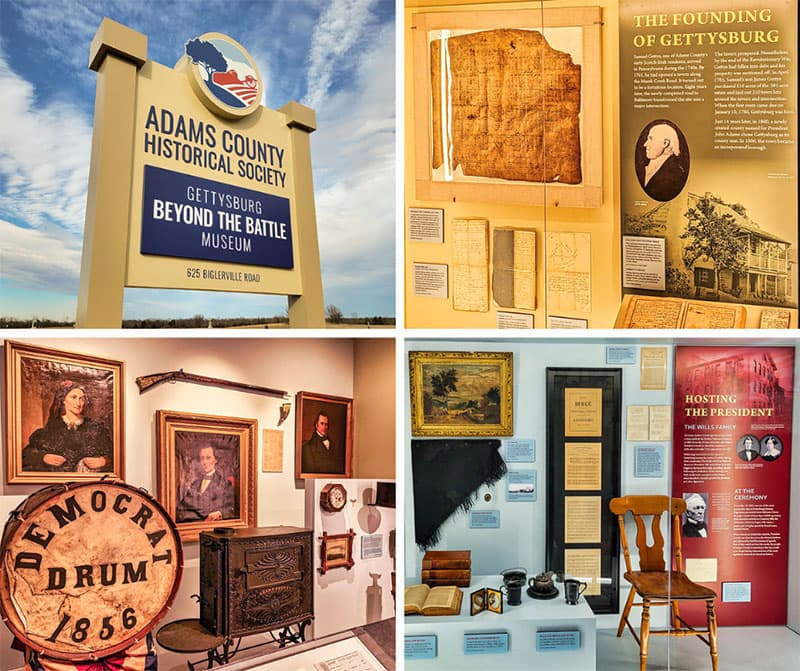
The Gettysburg Museum of History is home to thousands of unusual artifacts and atypical antiquities from American history, and admission is FREE!
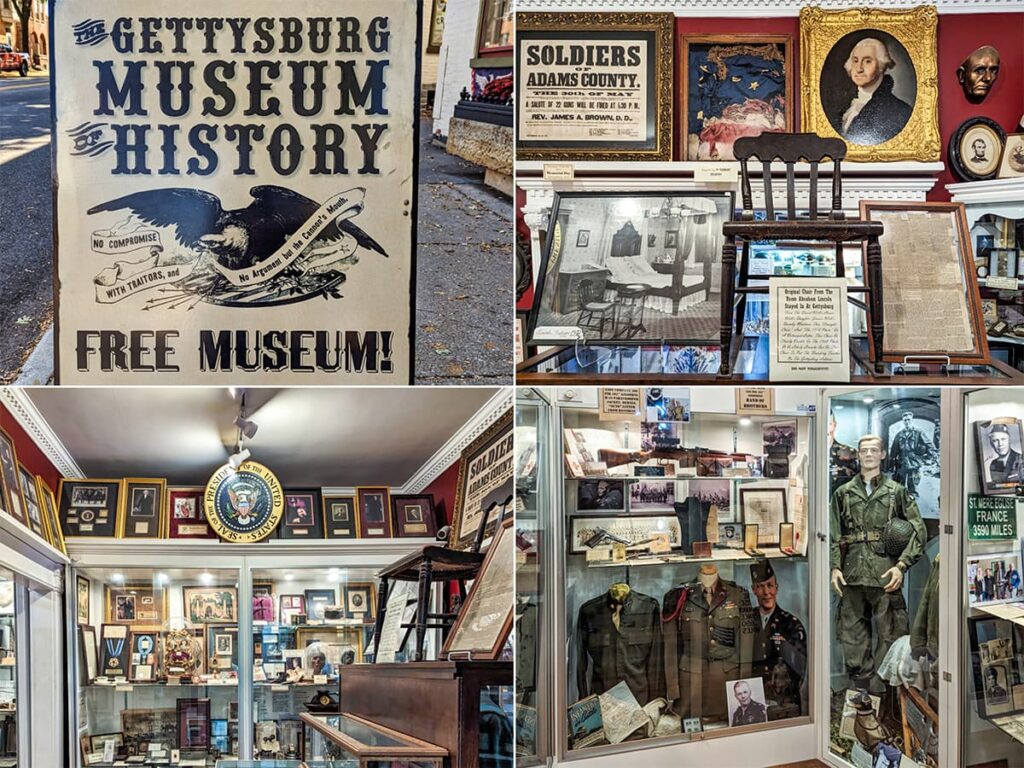
The Jennie Wade House is a historic landmark and museum that memorializes the life and untimely death of Jennie Wade, the only civilian killed during the Battle of Gettysburg.
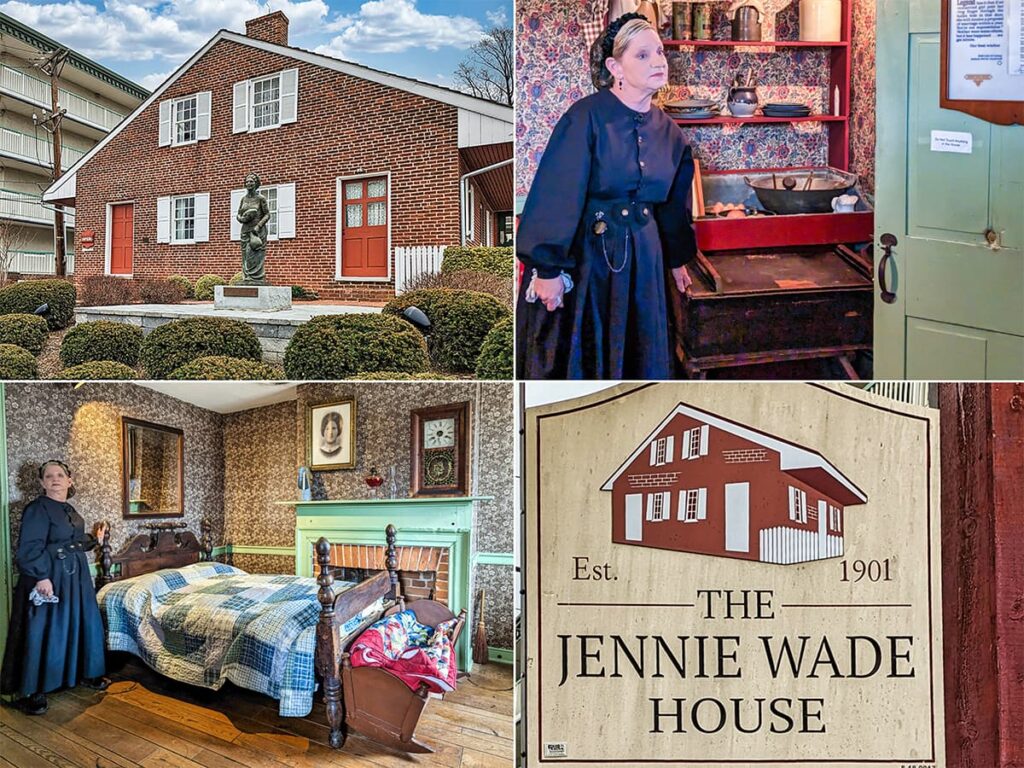
The Best Fall Foliage Views on the Gettysburg Battlefield is an invaluable resource if you’re visiting Gettysburg in October.
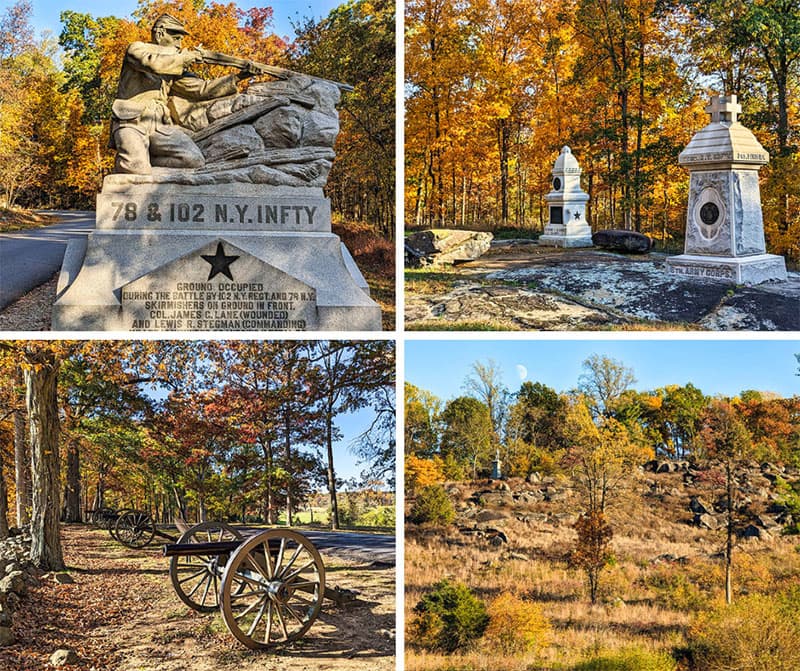
Mister Ed’s Elephant Museum and Candy Emporium just may be the best elephant-themed roadside attraction in Pennsylvania!
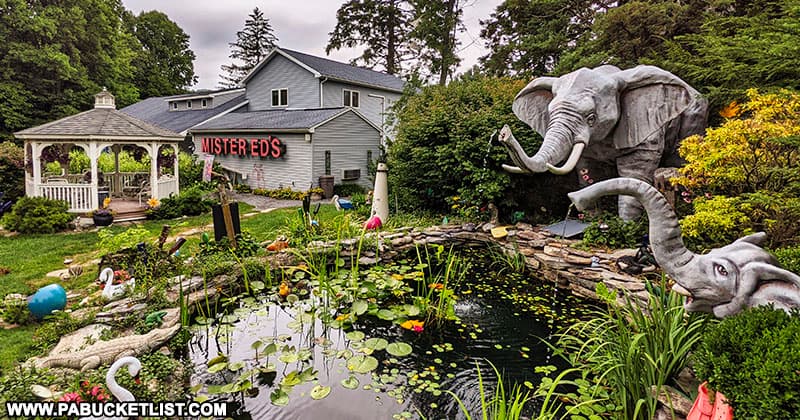
Located just outside of Gettysburg, Mister Ed’s features a dizzying array of elephant figurines, circus souvenirs, toys, statues, gardens, and artwork as well as over a thousand kinds of candy!
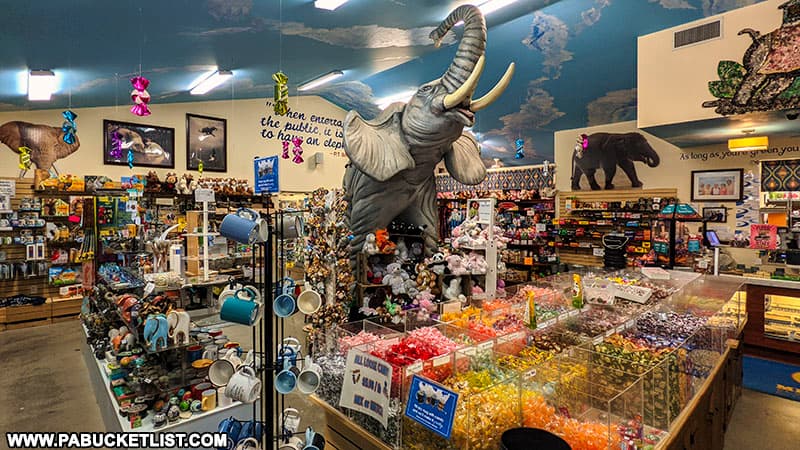
The historic Round Barn near Gettysburg is one of the most interesting and beautiful barns in Pennsylvania!
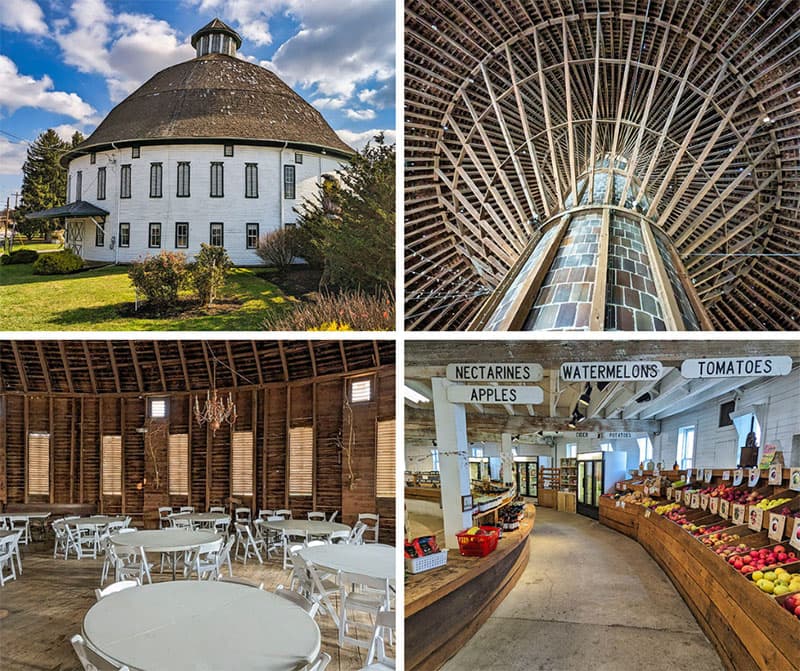
The Christmas Haus near Gettysburg is a one-of-a-kind marketplace for German-made Christmas ornaments, decorations, and accessories!
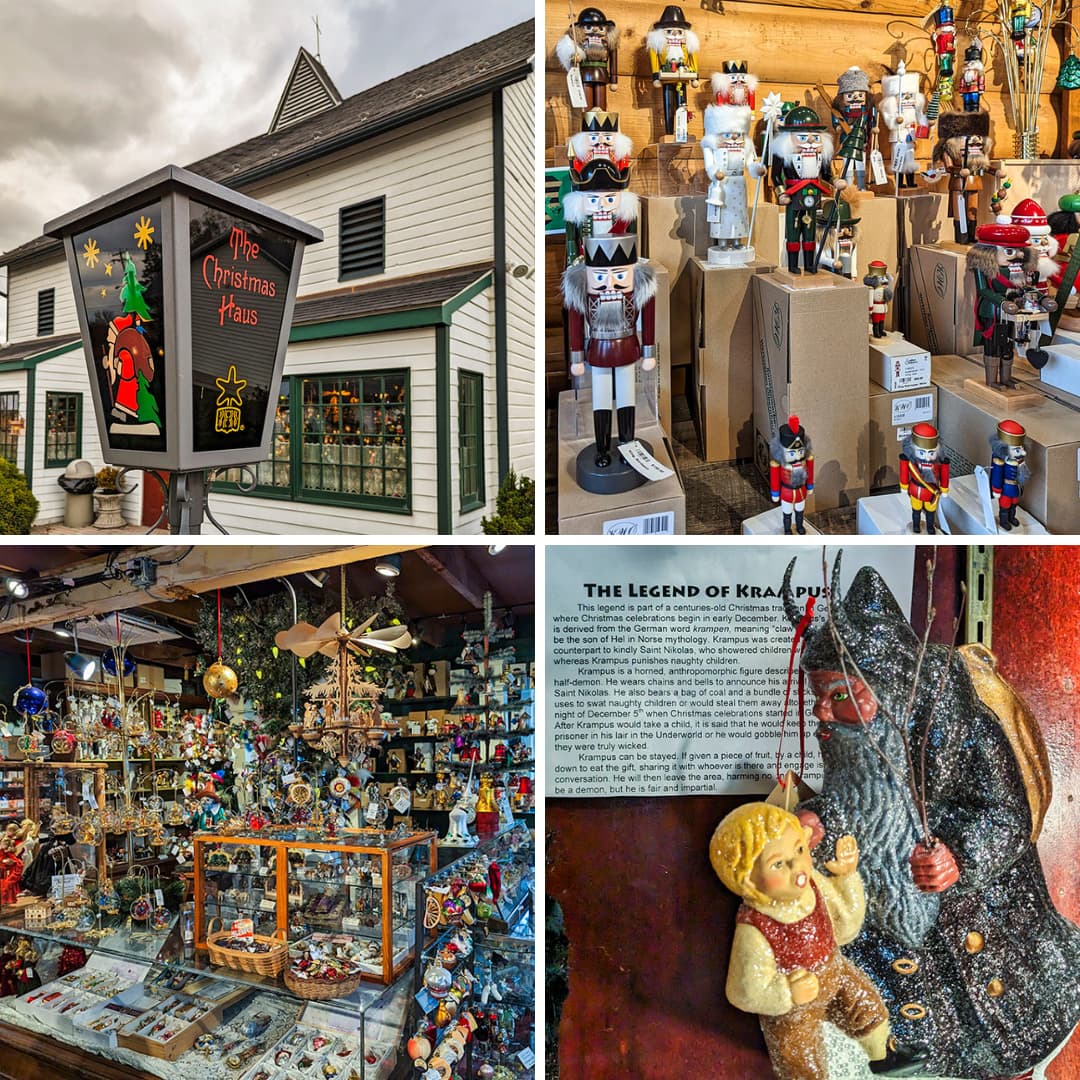
Did you enjoy this article?
If so, be sure to like and follow PA Bucket List on Facebook, Instagram, and/or Pinterest to stay up-to-date on my latest write-ups about the best things to see and do in Pennsylvania!
Click on any of the icons below to get connected to PA Bucket List on social media.
